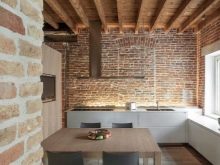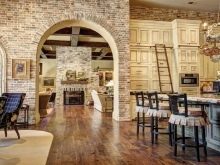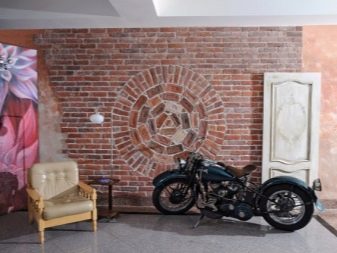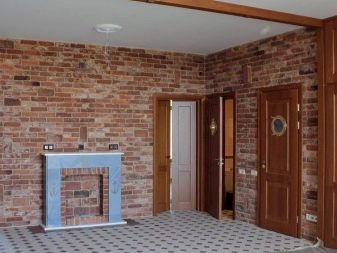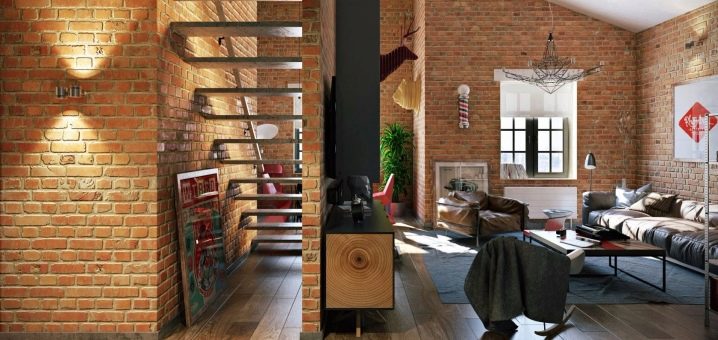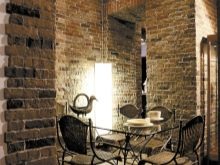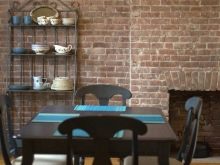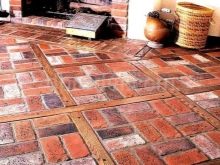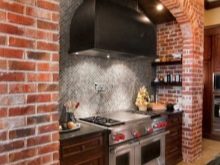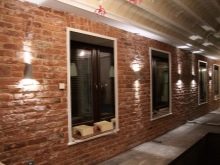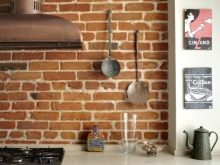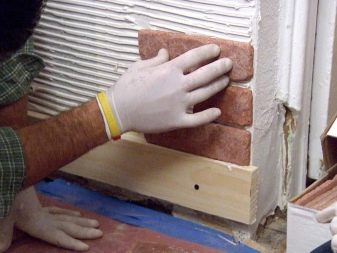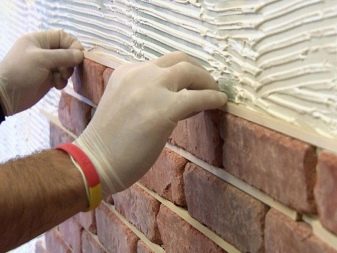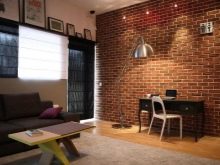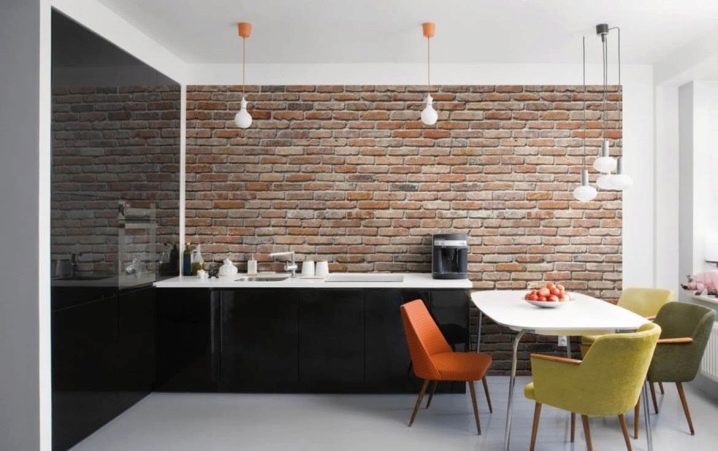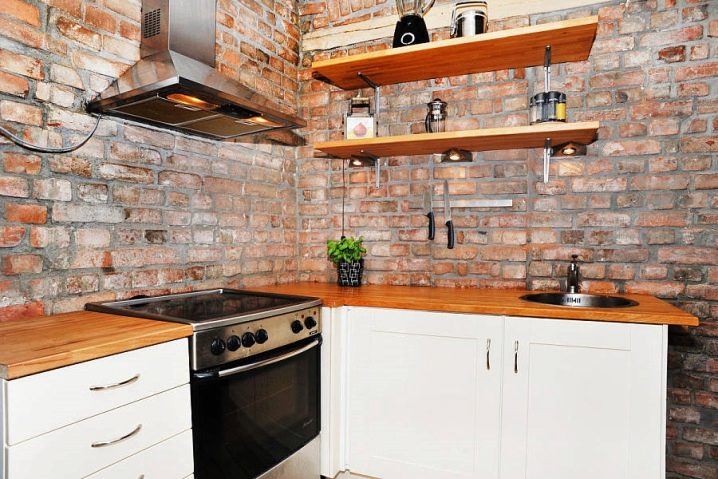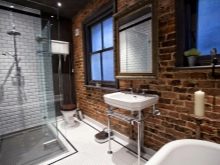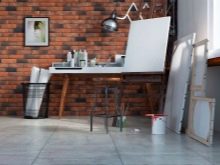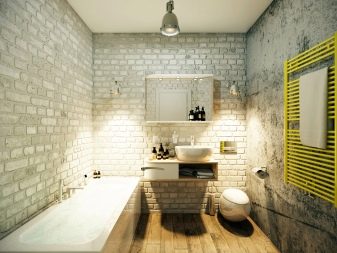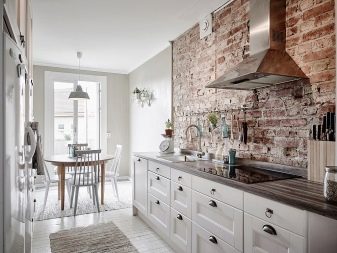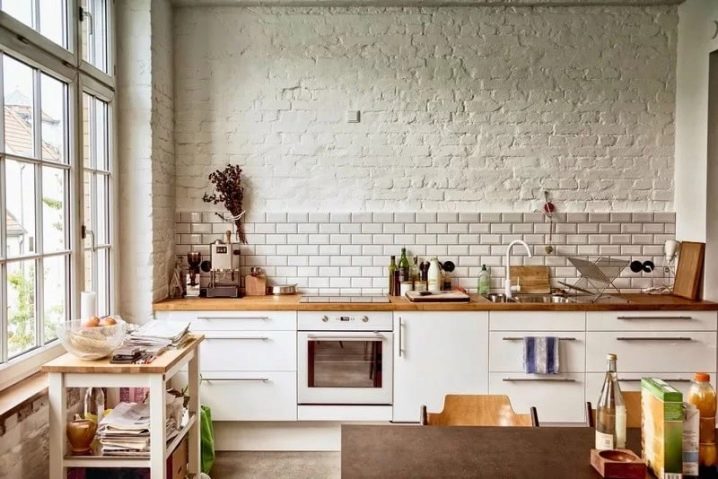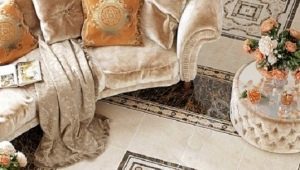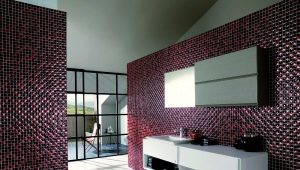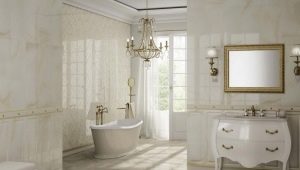Old brick tiles in the interior
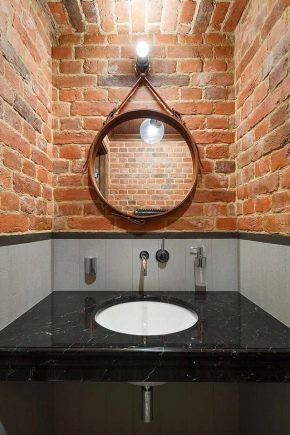
Finishing materials for walls and floors are varied. For all its virtues, traditional ceramic tiles still look patterned and predictable. But the materials from the old brick - is another matter. This material is much more attractive and more romantic.
Special features
Old bricks make a very durable and attractive tile.
In addition, such materials have several other advantages:
- they are easy to install, saving time and effort of the master;
- do not occupy the excess space indoors;
- reduce the load on the walls;
- are environmentally friendly, therefore do not pose any health hazard.
Reproduction of the old masonry is provided by a special texture, on which the weather elements and time itself have worked.
In the manufacture of such tiles, raw materials are taken when parsing buildings built 100 (or more) ago. Such a solution ensures optimal preservation of bricks and reduces costs (payment for the services of intermediaries). Experienced restorers who know how to create a unique decorative surface work on the creation of tiles.
Such a finishing material is better than solid bricks, because:
- suitable for cladding any surfaces without load reinforcement;
- allows you to spend less money during transportation;
- requires less time than full masonry.
The thickness of the tiles is 15-35 mm. As a rule, there is an original stamp on them.
What are the?
There are several varieties of antique brick tiles that are suitable for a loft, Provence or vintage style. In addition, such products are available for facade and interior work.
Also, tiles of old bricks can vary in their shades. The most common products are red, red and brown hue.
Old brick - the material is very expensive and high quality. Before buying you need to carefully check the documents from the supplier,not to purchase substandard material.
How to produce?
There are several mandatory steps for making such a spectacular tile:
- brick washed with special mixtures supplied under strong pressure;
- raw materials are disinfected;
- the tile is treated with a hydrophobic impregnation;
- lime "fix" so that it does not crumble.
Antique brick, converted into tiles, can be decorated with acrylic paints. But even without additional decoration, the unusual texture, color and relief are very attractive.
How to make a decorative tile from a brick with your own hands, see the next video.
Where can I use?
It is possible to apply such tile in houses and apartments, in shops and offices, in workshops and other rooms.
Decorative coatings create a very good look when used in the finishing:
- walls;
- tracks;
- floor and fireplace;
- chimney and other elements.
Exact reproduction of the situation in old buildings is a characteristic feature of high-quality material.
How to put a tile?
If turning to professionals seems too expensive, you can lay out such tiles with your own hands. To work will require:
- acrylic-based structural primer;
- tile adhesive;
- zatirochny mixes of bright flowers or cement.
The choice of a particular manufacturer of such materials should be as thorough as possible. It is necessary to take into account the practical characteristics, as well as rely on the reviews of those who have already used this or that option.
A tile of aged brick is put only after applying a special primer on the leveled surface.. Then the coating is smeared with glue and fill the gaps between them with a special mixture.
For interior work, slabs made from the bonded parts of bricks are suitable for framing key interior elements.
You can surround them with pictures or shelves filled with photos, cups and diplomas. Old tiles will look good around hunting trophies. The gradient of red and red tonalities forms the most unusual decorative solutions.
Tips for choosing
In a loft-style setting, it is recommended to use tiles cut on the bonded or spoon side of the brick. This coating allows you to create the effect of the wall corresponding to the century before last.The simplest interior solutions, which can be created without antique motifs, require only a rich texture. A suitable material is the inside of an old brick.
To make the finishing easier, and as a result an elegant interior was formed, it is recommended to select products by brand, size and color individually.
The most expensive options (with a vegetable stamp) are made of brick, laid in the XVII century. Later they began to use symbols corresponding to the first letter in the name of the owner of the enterprise. When there were a lot of brick factories, everyone began to apply a stamp with a full surname.
State industry put a sign of a double-headed eagle. During the reign of different emperors, he was surrounded by a stroke of various shapes, which allows connoisseurs to accurately date the material.
The tile made of this material lasts longer and looks much more aesthetic. (compared to imitation of old brick). The strength and stability of these materials to external influences is confirmed by the fact of long-term operation.
Styles
The tile from an old brick can be applied in interiors of various styles,whose choice is determined by the characteristics of the room.
So, for the direction of the loft are more suitable attics or upper floors, where there are very few partitions. Large windows, an abundance of metal and reinforced concrete correspond to the canons of this style, which implies an emphasized roughness and severity. Similar motifs should have a brick tile.
The surface of old bricks will look harmonious in the conditions of vintage style, full of artificially aged and antique items.
For Provence style, it is recommended to choose a tile from an old brick that has a lighter shade. It can be beige, white or dull-red surface finish.
